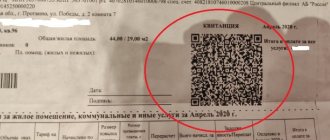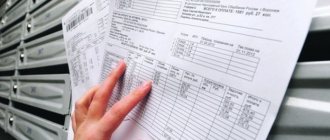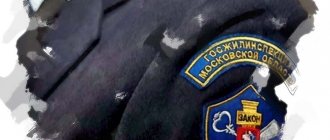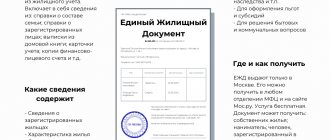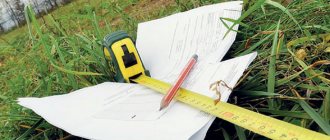Current legislation obliges citizens to pay for consumed utility services in a timely manner and in full. This requirement is contained in Article 153 of the Housing Code of the Russian Federation.
Utilities include the provision of energy, water, gas, and so on. In addition, owners and tenants of residential premises pay for maintenance, cleaning and improvement of the local area, and also make contributions for major repairs if they live in an apartment building.
At the same time, for more efficient collection of funds and convenience for citizens when making payments, special settlement centers were created in various regions, whose task is to accumulate rent received from residents and redirect it to direct utility service providers.
What it is
Decoding the abbreviation EIRC in simple words is a “single information settlement center”, and EIRTs is a legal entity created on the basis of a decision of regional or municipal authorities.
The main task of the settlement center is to accept payments from the population for utility services consumed by citizens. Attention! The EIRC itself does not provide housing and communal services, but acts only as certain intermediaries between their consumers and suppliers.
Here a question may arise related to the advisability of creating such settlement centers. However, their activities show effectiveness in collecting utility bills. The fact is that providers of housing and communal services are a variety of organizations that have their own tariffs and settlement accounts, while each supplier is a separate legal entity not associated with others.
For example , completely different organizations provide the population with gas, water and electricity. In this regard, previously citizens paid bills for consumed utility services to each supplier separately, which represents a certain inconvenience.
The EIRC has concluded agreements with all housing and communal services suppliers, and citizens can pay for consumed resources using one personal account according to the “single window” principle.
Debt check
We strongly discourage consumers from incurring debts for electricity payments. Otherwise, they will have to face penalties. That is why we recommend that each client periodically check whether he has any debt.
To do this he can:
- Log in to your personal page.
- Explore the main menu. This is where the amount of debt the consumer has will be displayed in red.
What does the settlement center do?
The task of the EIRC includes direct interaction with consumers of housing and communal services, aimed at ensuring full collection of utility bills.
The main activities of the settlement center include:
- Calculation of payments for consumed utilities. Payments are calculated based on the tariffs established by suppliers, as well as the readings of individual metering devices, which are transmitted by the owners and tenants of residential premises.
- Generating payment receipts and delivering them to the consumer. Every month, the EIRC generates and distributes payment receipts detailing the volume and cost of housing and communal services.
- Accepting payments from the public. Citizens make payments for consumed utilities at the cash desks of payment centers. In most regions, it is possible to pay for housing and communal services with a bank card or make an online payment.
- Settlements with suppliers. Funds received to pay for housing and communal services from citizens are sent to utility service providers minus a small commission that the EIRC withholds to pay for its operating activities.
- Informing citizens on issues related to charging for housing and communal services. Owners and tenants have the right to contact the EIRC on any issues related to the calculation of housing and communal services. In addition, it is the settlement centers that accept claims made when the accrued amounts are unreasonable.
- Issuance of certificates. EIRC employees are required to issue certificates and other documents to the population confirming the presence or absence of arrears in payment of housing and communal services.
All information is provided for informational purposes only. Only a doctor can make the correct diagnosis and prescribe appropriate treatment!
Hookworm disease
— anthroponoses, oral and percutaneous geohelminthiasis. A disease caused by parasitism in the human intestines of roundworms (helminths) - anclostomids. It is characterized by a chronic course, damage to the small intestine and the development of iron deficiency anemia. They combine two helminthiasis - hookworm and necatoriasis, which are similar in clinical and epidemiological characteristics.
Symptoms
An itchy, flat, raised rash may develop where the larvae have penetrated the skin. When the larvae move through the lungs, the body temperature sometimes rises, coughing and wheezing appear in the lungs. Adult parasites often cause pain in the upper abdomen. Iron deficiency anemia and low blood protein levels may result from intestinal bleeding. In children, growth retardation and heart failure are possible. There is widespread tissue swelling due to prolonged heavy blood loss.
Causes
Approximately a quarter of the world's population is infected with hookworms. Hookworm infections are mainly common in warm, damp places with unsanitary conditions, most of all in the Mediterranean, India, China, Japan, and certain regions of the Caucasus and Central Asia; necator lives in tropical regions of Africa, Asia and America. In the northern and central regions of Russia, hookworms are practically not found.
Parasite eggs are hatched in feces and mature in the soil after incubation for 1 to 2 days. After a few days, the larvae hatch and live in the soil. Because the larvae burrow through the skin, a person can become infected by walking barefoot in an area contaminated with human feces. The larvae reach the lungs through the lymphatic vessels. They then travel up the respiratory tract and are swallowed. A week after penetration through the skin, they reach the intestines. The larvae attach themselves through their mouth to the mucous membrane of the upper part of the host's small intestine and suck blood.
Treatment
To combat anemia, iron supplements are prescribed either orally or by injection. In severe cases, a blood transfusion may be necessary. When a person’s condition has stabilized, pyrantel or mebendazole is prescribed for 1-3 days orally to destroy the hookworm. Pregnant women should not take these medications.
Information sources:
- ru.wikipedia.org - hookworm disease, treatment, interesting facts, etc.;
- zdorovieinfo.ru - hookworm disease, symptoms, causes, etc.
Principle of operation
The EIRC is in close electronic cooperation with utility service providers. Thus, after the creation of a settlement center in a region or municipality, it develops and implements special software to ensure settlements with consumers and suppliers of housing and utility services.
After this, the settlement center enters into contracts with suppliers and consumers . It should be noted that suppliers do not have the right to evade their conclusion. In turn, utility service providers transfer to the EIRC all the necessary electronic databases containing information about consumers.
Upon completion of this stage, the EIRC begins to generate receipts of a certain form, after which they begin to arrive to consumers.
After paying for housing and communal services, the funds are accumulated in the account of the settlement center and then transferred to the service providers.
It is also useful to read: Rights and obligations of the owner of the premises
How receipts are generated and delivered to payers
Receipts are generated monthly. They are unified documents containing the following information :
- payment receiver;
- information about the payer;
- information about the residential premises, including square footage and number of residents;
- name of utilities;
- volume of consumption;
- established tariff for one unit of consumed utility resource;
- accrued amount for each resource consumed;
- the total amount payable for the current period.
Payment amounts for housing and communal services are calculated on the basis of established tariffs (they are set at the regional level), as well as meter readings that owners submit to the EIRC. If a particular consumer does not have meters or the resource is provided at a fixed rate, then consumption standards are taken into account, which are again established at the local level.
Reference! Payment receipts are delivered to citizens at their place of residence. In addition, electronic documents are becoming increasingly common, which can be obtained by e-mail or in your personal account on the EIRC website.
Find out information on the EPD
"EPD" is a single payment document.
According to it, the consumer can pay:
- communal apartment;
- repair, maintenance of residential property;
- other services.
In addition, according to it, the consumer can make a contribution provided for by the program for the operation of housing and common property.
This document consists of the following main chapters:
- "Gas supply". The amount of charges here depends on the cost established by the Government of the Moscow Region. The total amount is calculated per person and multiplied by the number of persons living in the housing. After installing the electrical appliance, the amount is calculated based on it.
- "Major renovation". Here the amount depends on the total area of the housing. The money transferred by the consumer is credited to the Capital Repair Fund, to a different account.
- "Voluntary insurance". In this category, the consumer has the right to receive compensation, but only if his home was involved in an emergency. At the end of the document, two amounts are calculated: with and without insurance. The consumer himself ticks the required box and pays the selected amount.
- "Electricity supply." Here the cost of services is determined by the installed device. And if the consumer does not have it, then the amount is determined according to the standard.
- "Heating". In this category, the accrued amount depends on the total area of the residential property. Moreover, it does not take into account how many citizens live in it.
- "Water disposal". This takes into account wastewater disposal and treatment. If there is a special device in the apartment, then the amount of charges is fixed for it. And if it is not there, then the amount depends on the volume of water supply accrued by the IPU.
- "Maintenance and current repairs." This category includes several services related to the maintenance of a residential building and its territory. The amount of charges here depends on the total area of the housing.
- "Water supply". The amount of charges is determined by the device. If it is not there, then the amount is calculated according to the standard. One company supplies water to a residential building, and a completely different company heats it to the required temperature. The amounts will vary.
- "Removal and disposal of solid waste." This is a section that talks about the maintenance of a residential building. The amount of charges here depends on the area of the residential property.
Do not forget that this document may include other additional services.
This could be payment:
- television;
- Internet;
- intercom.
Payment
In cities where utility payments are accepted through the EIRC, a network of settlement center offices is being organized where citizens can pay for consumed housing and communal services through the cash desk in cash.
However, this is not convenient in all cases.
Thus, receipts usually indicate account details to which citizens can transfer funds. Accordingly, using them, consumers can pay for housing and communal services through a bank. In some cases, a fee may apply for making a payment through a bank branch.
In addition, in many regions, payment for housing and communal services is available through a personal account, which can be accessed through the website or even through a mobile application.
Personal Area
In the vast majority of regions, citizens can register a personal account on the EIRC website. Let's look at its features using the example of the personal account of the EIRC in the Moscow region.
Thus, the website of the settlement center of the Moscow region is located at the web address www.my.mosenergosbyt.ru. On the main page you need to find the “Personal Account” tab.
In the menu that appears, click the “Registration” button. Here the user will see a special form in which they indicate :
- User's full name;
- e-mail;
- Mobile phone number;
- password (the user comes up with it himself);
- user's date of birth;
- floor.
In addition, information related to the address of the residential premises and the payer’s personal account number is additionally entered.
After registration is completed, you can access your personal account by entering your password and login in the appropriate section.
A personal account allows residents of the Moscow region to submit meter readings, receive information about accrued utility bills, pay for housing and communal services online, and be aware of the timing of verification of metering devices.
Mobile app
We care about the convenience of our users, so we created the MosObleIRC Online mobile application especially for them.
Here the client can save his time, learn everything about the process of charging and paying for utilities.
Interestingly, our application itself will send the user a push notification, reminding him of the date of issuing payment documents and the need to pay them. It will also even tell you about important events.
In addition, in the application you can:
- add several personal accounts belonging to different residential properties;
- pay utilities for all objects at once or for each separately;
- transmit electricity meter readings;
- keep track of the date of verification of devices;
- control the consumption of utility resources;
- view your account balance, payment history, charges, download a receipt in PDF format;
- familiarize yourself with the decoding of each service, the rules for calculating payments, explanations, and tariff plans. All this is done through the “Smart Payment” service;
- to our specialist, send him photos and scans of important documents;
- receive a certificate, receipt;
- order, pay for an additional service;
- find out the latest news;
- take advantage of other convenient and useful features of our service.
You can download the application easily. The consumer just needs to enter the store on his phone, enter the name of the desired application into the search bar (in this case, it is “MosOblEIRTS”), and install the selected application on his phone.
There is no need to pay anything to install it.
You can log into the application using the login and password from the user’s personal account created on our website.
Pros and cons of the center
In general, the EIRC makes it much easier for citizens to pay for housing and communal services. In addition, the ability to pay utility bills online significantly saves time and provides convenience for consumers.
Important! It should be taken into account that the EIRC charges a certain commission when transferring funds to the supplier. This is not stated directly on the receipt, but the corresponding costs are taken into account when setting tariffs, which indirectly affects the welfare of consumers.

